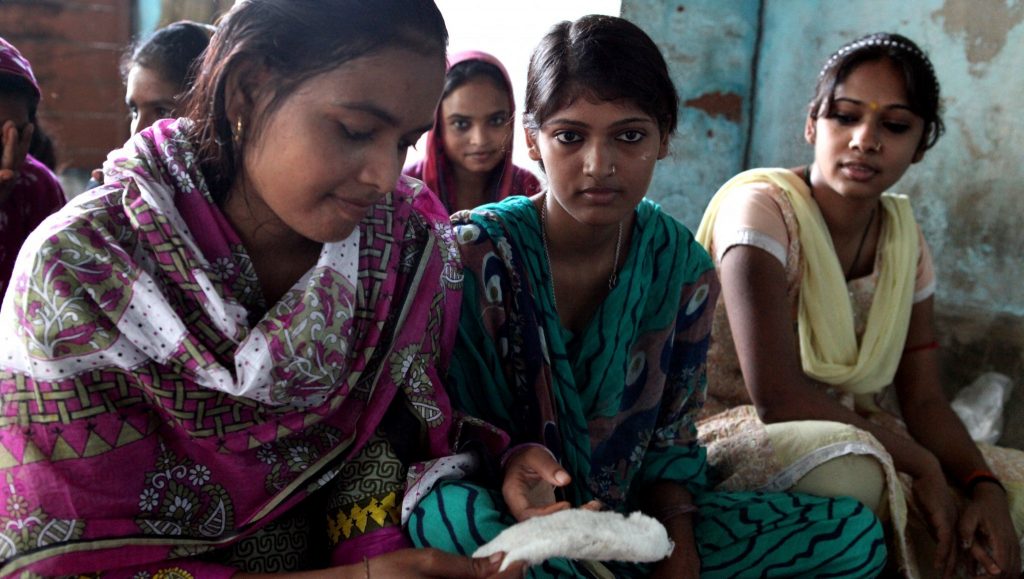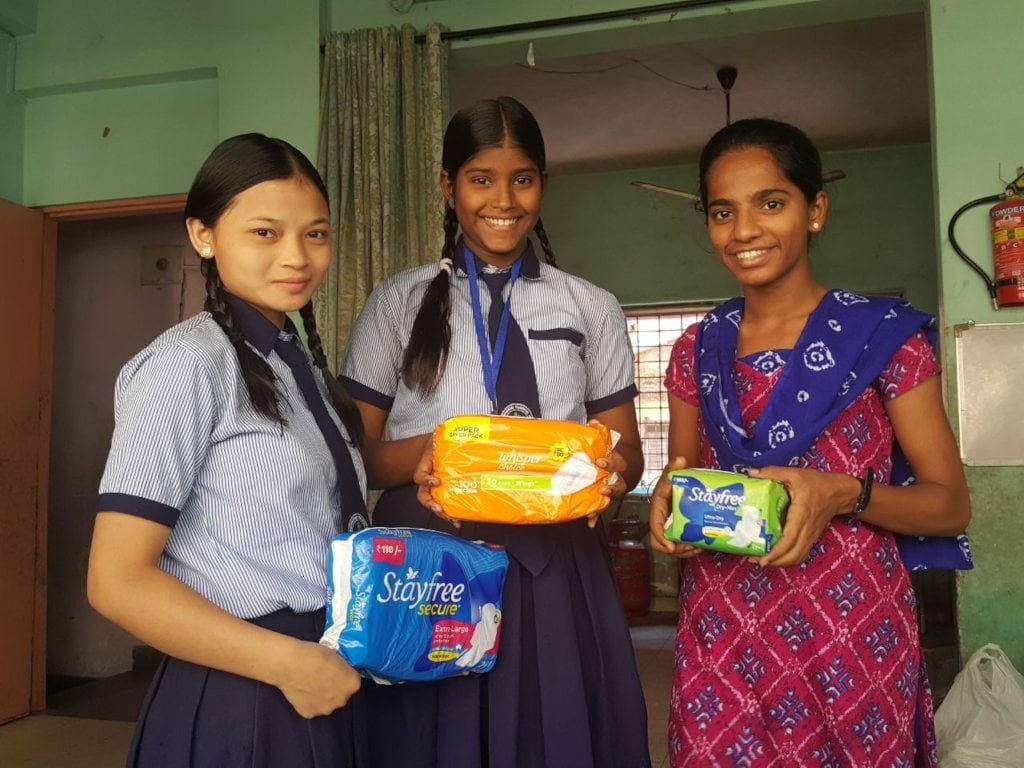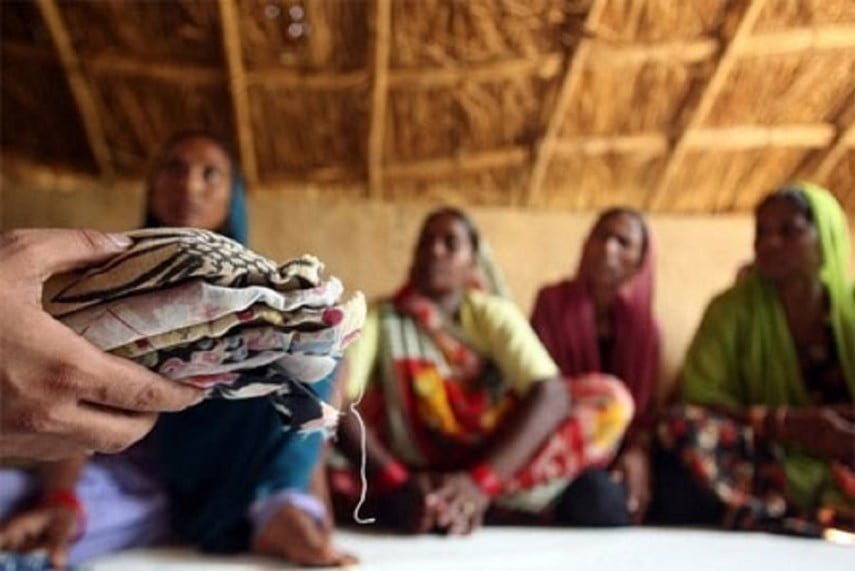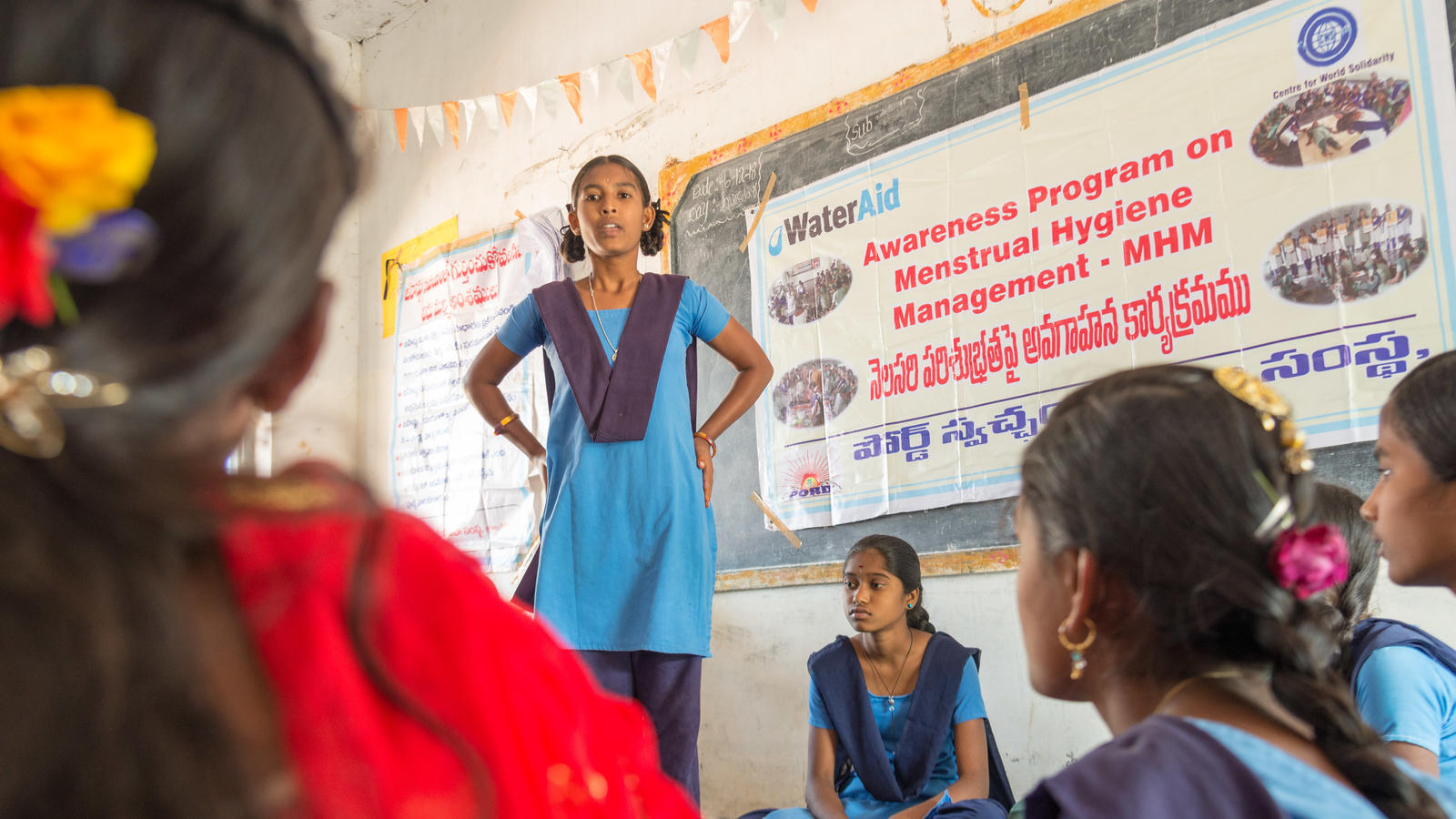This is an open letter written for the Aam Aadmi Party in order to encourage them to make Menstrual Health Management (MHM) and Menstrual Hygiene a more active part of the political developmental agendas proposed for bettering public healthcare systems in Delhi, in the upcoming Delhi Legislative Assembly Elections, 2020.
Ahead of the Delhi Legislative Assembly Elections, which is to be conducted on 8th of February 2020, the Aam Aadmi Party (AAP) has repeatedly emphasised their ‘honest’ governance advocating the subsidised facilities they have promised to provide within their public healthcare system. Their overall manifesto for the 2020 Delhi Elections evidently is constructed on the promises to strengthen health, education and infrastructural sectors.
However, their developmental agendas cannot be seen in isolation to one another. Health and healthcare is intricately linked with both educational and infrastructural development of an area. This consequently also implies that education and infrastructure influences as well as is influenced by healthcare facilities available for people. This relationship of interdependence becomes vividly alive especially if we peek into the politics around periods in our society.

Menstruation and menstrual hygiene in India has fairly been a topic of discussion in the last few years within public spheres and civil society; although menstruation even today is discussed insidiously, mostly among women and close circles. The efforts to invisibilise menstruation, both from our textbooks and in our everyday lives, especially in spaces with male presence, result due to the overarching socio-cultural taboos attached to it. This stigma around menstruation gets produced and reproduced through oral narratives, patriarchal misogyny within institutions like family, religion, education, pop culture and the lack of adequate dissemination of reliable information among children and adults due to poor governance.
The attempts to make menstruation invisible are often practiced and perpetuated by women too, who are socialised into the patriarchal system that stigmatises them for menstruating. And, when government bodies fail to provide adequate facilities and infrastructures in public spaces to tackle the stigma, women resort to invisibilising themselves for the fear of period stains, lack of toilets and proper sanitation systems.
While a report claims that, on any given day, more than 800 million girls and women menstruate, menstrual health advocacy still fails to appear on the developmental agendas of political parties. For most political manifestos, health is perceived as an ‘umbrella category’, devoid of any intersectionality.
While a report claims that, on any given day, more than 800 million girls and women menstruate, menstrual health advocacy still fails to appear on the developmental agendas of political parties. For most political manifestos, health is perceived as an ‘umbrella category’, devoid of any intersectionality.

However, positive and practical changes will only occur when governments and policy makers identify the multiple marginalities bred through caste, gender and class positions within the health sector, rather than simply allocating budgets and building more medical centres. Further, the various linkages between the educational, health and infrastructural sectors need to be realised and worked upon through sensitisation programs and health policies, in order to ensure that development in one of these sectors lead to the betterment of the others.
The urgency of the matter at hand is actualised when various reports inform that young girls miss their schools during their periods due to menstrual health concerns and the shortage of proper toilets, adequate water supply, efficient waste management systems and sanitary products due to social causes like poor governance as well as individual financial shortages. Poor menstrual hygiene can also lead to various health risks such as urinary tract infections, mental health issues and reproductive complications.
With the growing environmental concerns, economic crisis and the perpetual cultural shaming of periods, women are directly affected as they become victims of the multiple inequalities that exist in our society. The already existing inequalities of basic resources have further repercussions on the availability of menstrual hygiene and health products. Adding to that, is the lack of acknowledgement of the gravity of the situation at hand by people in power.
Period Poverty
It is of no surprise when social researchers claim that women carry ‘double burden’, when they argue about one of the most crucial global developmental issues—poverty. In the Indian context, women who menstruate have historically undergone this phenomenon of period poverty. And women who already live in conditions of economic poverty, evidently are more vulnerable to period poverty.
Socio-cultural shaming and political ignorance of issues around menstruation lead to the ostracisation of these women, who are either completely excluded from accessing sanitary products and facilities or they are bound to pay the ‘pink tax’, a form of economic gender-based discrimination, that is capitalised on by private companies as well as the government.
Period poverty can be seen both a cause and a problem in itself. Proper care during the menstrual cycle is hindered by the period poverty cycle, which could rise due to the lack of knowledge among children and adults, religious superstitions and poor governance, which then again result into the lack of access to menstrual health products, sanitation facilities and produce various anxieties around menstruation.
There is an immediate need for intrusion to break the latter cycle if we want young girls to receive education comfortably, look for employment in future, smash the gendered public/private dichotomy and fight the male-dominated patriarchal world, which prioritises men and their contribution over women, citing that women are “weaker” as they have “health issues” to deal with.

It is important to recognise that periods do not make girls or women ‘weaker’, but the patriarchal and brahminical societal structure promotes such gender inequalities. In a system, where women are already discouraged to access education and employment, the taboos around periods either directly legitimise their subordination invoking religious ‘mandates’, or indirectly push them further towards subservience by neglecting the basic health necessities that the government should ideally provide for free or at subsidised rates.
Along with all these issues, women who are oppressed within its broader category, such as Dalit women, Adivasi women, women with disabilities, Queer people, women living in conflict areas and women living within these intersections, with subordinated lived realities go through a more severe form of period poverty.
What Can Your Government Do?
The Aam Aadmi Party’s interest in improving the health sector services is manifested through their budget allocation towards healthcare, which is 4 to 5 per cent more than what most state governments assign on an average. The Party also envisions to build several Mohalla clinics (Primary Healthcare Centres) and Polyclinics, which promise to provide not just basic healthcare services for subsidised rates but also have promised to cater to mental health issues of the citizens of Delhi.
While the current education minister, Mr. Manish Sisodia had emphasised on the need to educate both boys and girls on menstruation and menstrual health management, there is a dire need to make women’s issues more active part of their political agenda, especially during elections, since the election manifesto and the discussions around it get ample media coverage, thereby acting as a sensitising program in itself.
The education, health and municipality sectors should work together in this project, if they desire to bring about changes in the way menstruation is viewed in contemporary times. Adding to these, given below are a few aspects which could be dealt with to ensure a holistic development with respect to menstrual hygiene management (MHM).
Providing Sanitary Goods For Free/Subsidised Rates
One of the fundamental ways of tackling period poverty is by making sanitary goods more accessible to women. While women in the West are fighting for reducing the ‘pink tax’ on sanitary goods, the challenges in the Indian context are quite different. The subsidised rates of sanitary goods too can become expensive or be less prioritised over other amenities like food and water in India. And moreover, sanitary napkins marketed by private companies made available in skyrocketed prices, which the urban poor cannot afford.
Further, while the numbers that explain the deficit in accessing sanitary products are gravely disappointing in rural areas, the urban cities are not doing well either, in these aspects. Hence, rather than simply cutting down taxes, governments should ensure that good quality sanitary products are distributed free of cost, especially for people who belong to the lower rungs in society.
Also read: Infographic: How Can You Break Menstrual Taboos?
Door to Door Campaigns
Families play a significant role in creating and perpetuating menstrual taboos. The information around menstruation, unlike private property, is inherited through the women’s lineage. Fathers and brothers depend on the mothers of the household to perform care work, even when it comes to informing women adolescents about periods. Families also tend to segregate women during menstruation in India.
The recent Sabarimala case is an example, where menstruating women are not simply discouraged but physically prohibited from entering the temple premises. They experience a form of untouchability since they are physically segregated in the house, seen as impure beings, not allowed to cook food and enter or touch the kitchen or any other sacred objects of religious worship.
Campaigns aimed at sensitising families could be one way to tackle such forms of discrimination. The circle of misinformation or no information at all, has to be challenged by actively talking about menstrual health, bursting myths, dismantling menstrual taboos and encouraging both parents to engage with their children (daughters or sons) about periods.
Campaigns aimed at sensitising families could be one way to tackle such forms of discrimination. The circle of misinformation or no information at all, has to be challenged by actively talking about menstrual hygiene, bursting myths, dismantling menstrual taboos and encouraging both parents to engage with their children (daughters or sons) about periods.
Increased Sensitisation In Schools/ Menstrual Health Education (MHE)
While most menstrual hygiene sensitisation programmes view women and female school teachers as the primary targets for disseminating menstrual health education, men and boys often are thought of as secondary participants within this discourse. However, men have a great influence on the everyday lives of women and the policies that are formulated for them. They are husbands, fathers, sons, politicians, peers, teachers, employers and policy makers. Even more so, since most public spaces and powerful positions are occupied by them. As gender inequality is one of the prime reasons for such apathy towards menstrual health, men and boys should be treated equal targets for sensitisation programmes in schools and workplaces.
Men need to learn about menstruation and support menstrual hygiene, rather than dissociating themselves by calling it a “women’s issue”. Adding to that, both people who menstruate and who don’t, often receive information about menstruation from their peers and discuss them within such narrow circles. However, the accuracy of such discussions is always up for debate.
The Ministry of Education should intervene into these ‘whispers’ and ensure that students receive information that is reliable and fact checked. Further, the discourse that is offered in schools should be updated and written not only in a scientific manner, with ‘hard biological facts’, but also from a feminist perspective that counters conservative language that is otherwise prevalent in our society.
Bettering Other Facilities
Hardly a few public toilets, even in the national capital qualify as clean, let alone the availability of public dispensaries for sanitary products. The water supply is compromised and the waste management systems fail in ensuring a proper disposal system for soiled pads.
When the government promises to build more toilets, they should keep in mind that toilets are places engendered with gendered experiences. They must make menstrual health management a significant part of their developmental agendas, that often concentrate more on infrastructural expansion (in quantity) rather than bettering the already existing deplorable public toilets.
As pointed out earlier, the sectors of health, education and infrastructure have to go hand-in-hand towards the path of a more gender equal society. Hence, other facilities such as water supply, waste management systems, public safety, effectively maintained public toilets and gender sensitive infrastructures should be put into place in order to implement a functional and efficacious MHM system.
Along with that, the government should also keep in mind about the labour force that goes into maintaining these public service systems. The politics of who cleans the toilets? and who uses them? has to be considered from a caste perspective. People who work within waste management systems have to be adequately incentivised for the work they do, till policy makers can find alternatives for such historically oppressed forms of labour.
Conclusion
While women’s work, both in public and private spaces still remain highly unacknowledged, due to its systematic and structural invisibilisation, the governments across the states and regions cannot be indifferent to the declining female labour force participation rates, even within urban settings, which are often promised to be more well-equipped with facilities, encouraging safer and effective public spaces for women. The demotivating factors that lead to the skewed male to female ratio in public spaces in India is a result of various reasons that are either deprioritised or completely negated by our male-dominated governmental bodies. Menstrual health is one of them.
Also read: Why Do We Need The Menstrual Leave Policy In India?
Women’s bodies and their health management cannot be simply defined by men’s discomfort to talk about menstruation. The stigma can be countered when governments sensitise themselves, normalise conversations around periods, make gender sensitive policies (mandatory menstrual hygiene sensitisation programs, menstrual leaves), equip schools and workplaces with sanitary products and systems, prioritise menstrual health and well-being as much as food, water or medicines and revise health curriculum in schools and universities.
Disclaimer: This piece is also published on Youth Ki Awaaz as part of their #PeriodPaath writing contest.
Featured Image Source: WaterAid India
About the author(s)
Pragya is a Master's Graduate in Sociology from Jawaharlal Nehru University. She works as the content editor at Feminism In India. She is also a ramen enthusiast, a hummus mother, a postcard hoarder and a wannabe cat lady. She still prefers writing on her notebooks, rather than on her laptop, but her job demands her to do just the opposite. Her favourite season is spring, and her alter ego is that of Mrs. Dalloway who said, "She would buy the flowers herself", in case no man ever buys her any!




